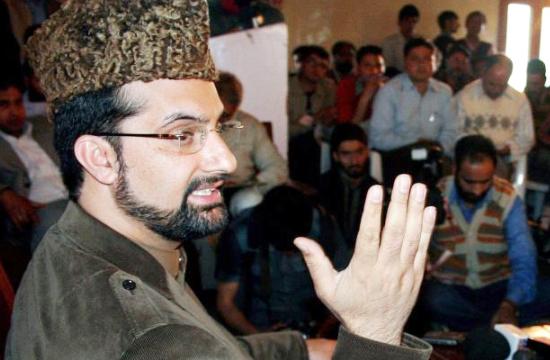The Mirwaiz led Hurriyat Conference appears unable to accommodate dissent within its ranks. The tussle over restructuring the resistance conglomerate seems headed toward bringing about yet another split in the formation, a ‘third front’ blessed by the veteran rebel leader Azam Inquilabi. SHAH ABBAS reports.

It was expected in the unionist camp but the situation indicates the separatists may opt for it first. After peacenik cleric Mirwaiz Umar Farooq rejected the demand of abolishing the present structure of the alliance he heads, the stage is all set for the formation of a possible ‘third front’.
“I want to form a model resistance group which will work on religious lines of Nizam-e-Shura,” Azam Inqullabi, the veteran rebel leader told Kashmir life. He will be talking to twenty leaders and activists so that “when the founders of the movement die, their last political rites would be offered by the people who have shown lifelong political consistency”.
The group, however, will not be parallel brand-Hurriyat. “We will not block the ways of unification of present factions of Hurriyat,” Inquillabi said. “The formation of this model group is important so that the resistance leaders are not used to clean the political utensils only which has been the practice in Mirwaiz led Hurriyat”.
Terming Mirwaiz a “complete failure”, Inquillabi alleged the cleric fell short of his minimum expectations from him as he shielded “those who are hand in glove with pro-India politicians”. He referred to the continuation of Agha Sayed Hassan in the conglomerate even after having his mall inaugurated by Minister Ghulam Hasan Mir and retaining his right to vote in restructuring of the Hurriyat (M).
Inqullabi is not alone. Shabir Shah, Nayeem Khan, Zafar Akbar Bhat and M Yousuf Naqash are other strong advocates of replacing the prevailing two-tier system in the ‘moderate’ Hurriyat by a ‘Nizam-e-Shora’. This system, they believe, will help them contribute better to the resistance movement. Had it been adopted earlier, they insist, Hurriyat would not have suffered a vertical split in the first place.
But Mirwaiz has his explaination. “The two-tier system of the Hurriyat was adopted by the constitutional committee headed by Justice Bahauddin Farooqi, and after very serious and detailed deliberations majority of the leaders decided to continue with it,” Mirwaiz says. He took more than three years to understand that the vociferously demanded change in the present structural set up of the amalgam was impossible. To manage indiscipline in the alliance, Mirwaiz in 2009 took over as the sole custodian of the alliance after abolishing all party positions and committed to reorganise the amalgam within a specific time frame. His announcement was the outcome of intense pressure within that lead to certain “unpleasant” scenes recently.
Last week, Mirwaiz announced the verdict after a long deliberation with executive and general council members. “In forum politics, like Hurriyat, any issue is either decided on the basis of consensus or majority,” Mirwaiz said, “Majority of the members supported the continuation of present two-tier system so the chapter should be considered as closed”. The announcement came after prolonged meetings on July 10.

But the cleric’s assertions are not going uncontested. Nayeem Ahmad Khan, for instance, tells a different story. “Till I left with Shabir Shah, Zafar Akbar Bhat and M Yousuf Naqash, no conclusions were drawn in the Hurriyat meeting, but I was surprised when I heard about the announcement later,” Khan told Kahmir Life. “It is status quo and not acceptable.”
Khan says there is no harm in doing away with the two-tier set up. “It has not delivered in past and it is not going to deliver in future as well, so it is better to get it replaced by a newer one where everybody is heard honorably,” he said. “A sub committee was formed in Hurriyat to look into the demand of changing the prevailing system but it never submitted its report.”
The Hurriyat (M) has a general house and an all powerful executive council. While all the constituents are part of the general council, only a select few are in the all-powerful executive council. Interestingly, nobody knows the criterion that takes constituents to the general council or the executive body, especially after the earlier vertical split with Syed Ali Geelani walking away.
Currently, the Hurriyat (M) has seven members in its Executive Council. With Mirwaiz as its Chairman, the other members include Prof Abdul Gani Bhat, Shabir Ahmad Shah, Moulana Abbas Ansari ,Bilal Gani Lone, Agha Syed Hassan and Mukhtar Ahmad Waza. Fazal Haq Qureshi is in the executive council as a representative of the General Council, but after he was injured a few years back in a mysterious attack on him, he is represented by proxy by Musadiq Aadil. “If Executive needs a representative of the General Council, they should elect one,” a general council member said. “You cannot nominate a person on our behalf and then make him represent you perpetually through a proxy without even telling us.”















